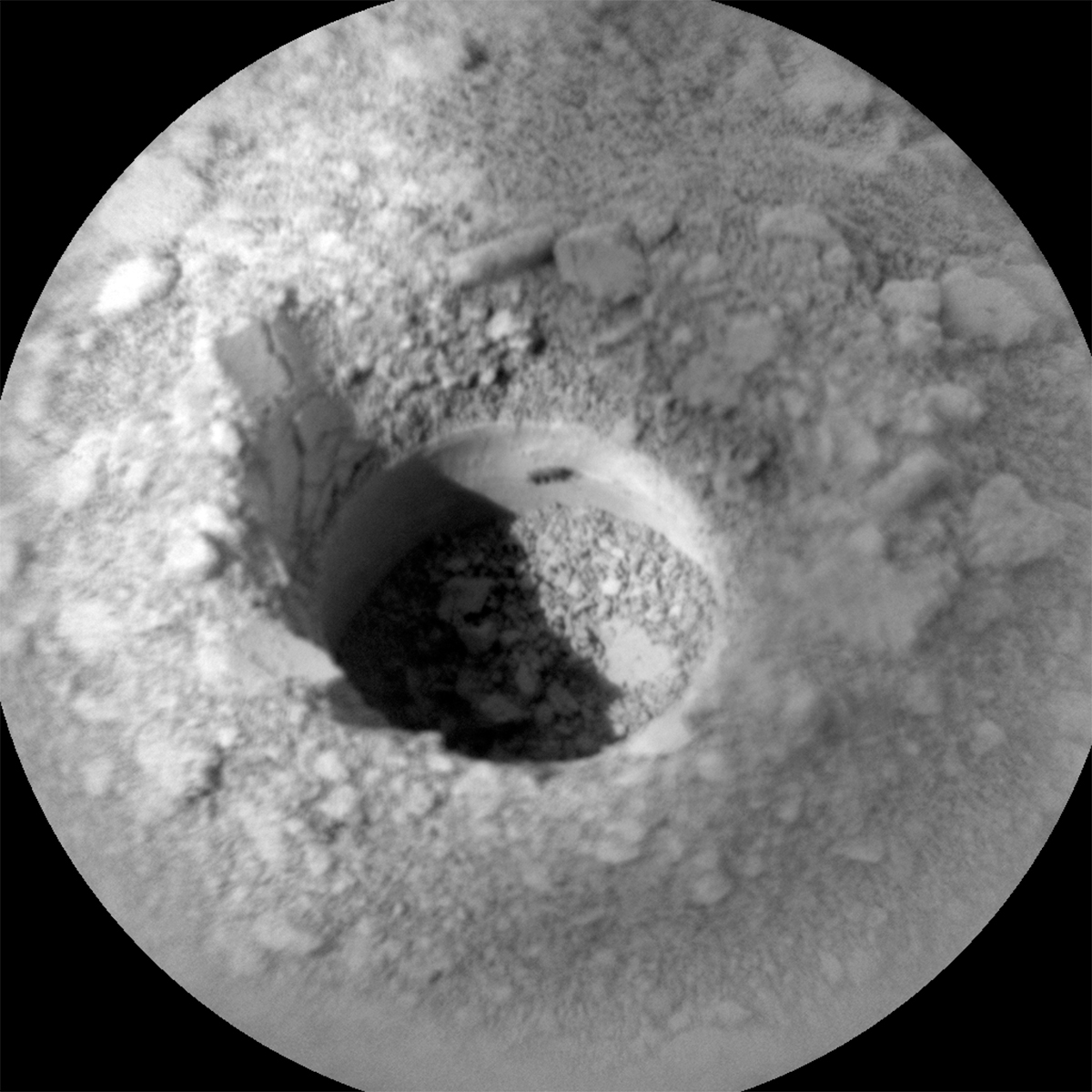3 min read

Both the CheMin and SAM instruments have dined on the Avanavero drill samples and have decided their appetites are sated. CheMin has completed X-ray diffraction mineralogical analysis of the Avanavero drill sample, and SAM their Evolved Gas Analysis. Both instrument teams are satisfied with their analyses and SAM are not opting to do a Gas Chromatography-Mass Spectrometry run. Now it is the turn of MAHLI, APXS and ChemCam to investigate the flavour of the drill fines around the Avanavero drill hole for texture and chemistry, finishing up observations at this site before we drive away next week. The composition of the drill fines determined by APXS and ChemCam will help the CheMin and SAM teams refine interpretations of their data. The science team are all eagerly awaiting their results as we drive through this interesting transition from clay-bearing to sulfate-bearing strata. As the APXS payload downlink/uplink lead and strategic planner today, I worked with the rover engineers to find the best placement for APXS to ensure that we fill as much of our field of view as possible with the fines. I also realized that our new drilling strategy required a MAHLI image co-located with the APXS placement, so that we can determine that we did indeed target the drill fines before we drive away in the next plan.
As well as finishing up our investigations of the Avanavero drill site, we took advantage of our time here to add to our inventory of imaging and compositional data, which will result in this being a well-studied area. As well as LIBS of the drill fines, ChemCam will analyze a resistant, plate-like feature, “Ekereku” (also documented with Mastcam) and acquire an RMI mosaic of an interesting lighter coloured expanse of bedrock in the distance. The pre-existing Mastcam mosaic of the well-layered strata associated with “Marbura Hill” will also be extended to provide improved context, textural and structural information.
When Curiosity is parked in one spot for more than a few sols, the team often takes advantage of the situation to monitor any changes to the surface over that time. As part of these change detection observations Mastcam will continue to monitor the movement of the drill fines around the hole, and any sand/soil movement in the wheel tracks (“Karouni,” “Kamana” and “Simibi”). In contrast, the environmental science team planned several observations to continue monitoring changes in atmospheric conditions. These included: Navcam line of sight images, a large dust devil survey, suprahorizon movies, and a zenith movie.
Because SAM and CheMin are finished with drill sample, both will execute activities to ready their respective instruments for the next time we drill. The SAM instrument will remove the sample cup from the SAM oven in preparation for driving, and CheMin will perform an empty cell analysis to check for any remaining sample after they dumped the fines in the previous plan. Standard REMS, DAN and RAD activities round out this plan.
Written by Lucy Thompson, Planetary Geologist at University of New Brunswick







